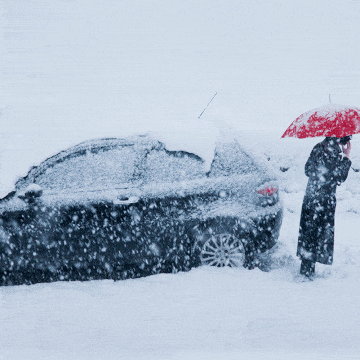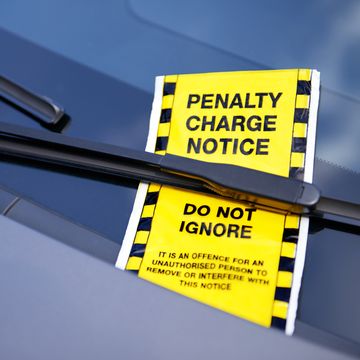Driving or cycling on our roads these days can feel like you’re navigating a pothole obstacle course.
In fact, the state of our roads is now so poor that Transport Secretary Louise Haigh recently said the UK is suffering from a ‘pothole plague’. Meanwhile, The AA revealed that the number of pothole-related breakdown callouts it handled last month was the highest figure for September since 2017. And the number of annual pothole-related calls it responds to has been steadily growing for the past four years.
The new Government has said it will provide support to help local authorities repair up to 1 million more potholes each year. In the meantime, though, hitting a pothole can leave motorists with a hefty garage bill to put right the damage caused.
According to the RAC, the most common types of damage caused by potholes include tyre punctures – or even blowouts – and damage to your car’s wheels, suspension and steering system. Particularly deep potholes can even damage the exhaust system underneath your car. It says repairing suspension springs and wheel damage alone could cost as much as £460, on average, for a family-sized car. And the average cost of car repairs after a run-in with a pothole is around £250, according to the AA.
Beyond the damage to your vehicle, there’s also the very real possibility that hitting a pothole causes a serious accident. For cyclists and motorcyclists, there’s a much higher risk of serious injury or fatality as the result of a pothole collision.
Whether you’re trying to dodge them or having to deal with the effects of hitting one, here are five things every road user should know about potholes.
1. Be wary of potholes in disguise
At this time of year, when we’re coming into what are usually the rainiest months in the UK, what looks like a harmless puddle could actually disguise a more dangerous pothole. Following the heavy rain the UK has recently experienced, the AA says it’s seen a corresponding increase in pothole damage to vehicles.
Because it’s almost impossible to tell a puddle from a pothole when you’re driving, the AA advises always driving around puddles if it’s safe to do so, rather than risking damage to your car.
When the road is dry and you spot a pothole that you can’t swerve safely to avoid, there are ways to try and minimise damage to your car. “It’s important to maintain a good distance between you and the vehicle in front so you have more time to see a pothole ahead and slow your vehicle down on approach,” says Nicholas Lyes, IAM RoadSmart Director of Policy and Standards. “Braking hard as you hit the pothole puts more stress on the wheels. There’s no totally safe way to drive through a pothole, but by keeping a safe distance and limiting your speed, you might be able to avoid significant and costly damage to your vehicle.”
2. If you see a pothole, report it
If you spot a pothole on a local road, reporting it to your local authority can help both you and other road users in two ways. Firstly, reporting a pothole means there’s a better change of it getting fixed. Secondly, if another driver’s vehicle is damaged by the pothole you report, they stand a better chance of being able to claim compensation. Councils cannot be held liable for a road defect they're unaware of.
In England, use the postcode search on the Gov.uk website to find out who to report a pothole to. Alternatively, head to FixMyStreet, which acts as a national reporting platform, and report it there – it also shows you potholes other road users have reported in your area on an interactive map, so you can stay vigilant when you’re driving or cycling.
If you notice a pothole on a motorway or major A-road, contact National Highways.
In Scotland, contact the local council responsible for the maintenance of the road via the Mygov.scot website to report a pothole on a local road. For potholes on trunk roads or motorways, contact BEAR Scotland (north west and south east routes) or Amey (south west and north east routes).
In Wales, contact the local authority responsible for a local road (find it using the postcode search on the Gov.wales website) or Traffic Wales for most A-roads, trunk roads and motorways.
In Northern Ireland, report a pothole on the NI Direct website.
3. If your car is damaged by a pothole, collect evidence
If it’s safe to stop and get out of your car, it’s a good idea to gather evidence of the pothole you’ve hit at the time you hit it. Note the name of the road you’re on, your location on that road and your direction of travel. If you can safely take photographs of the pothole, adding an object like a shoe to give a sense of the scale, is even better.
If you have to get your car repaired to put right damage from a pothole, ask the garage to put the details of the repair and the cost of the repair in writing. Bear in mind that you might also need to provide evidence of quotes to carry out the work from more than one garage.
4. You may be able to claim compensation
You can make a claim for compensation if your vehicle has been damaged by a pothole, but you’ll need to address this to the right organisation. If the pothole was on a local road, a B road or a smaller A road, address your claim to the local authority or council responsible for its maintenance. For larger roads, you’ll need to claim compensation from the same organisations you’d report a pothole to (see the section above for details).
If they believe you have a valid claim, you’ll be asked to fill out a damage report form. This will be sent to you — fill it out using the evidence you have collected, copies of invoices for any repairs, your MOT certificate and any photos you may have of the damage.
5. Weigh up whether it’s worth claiming on your insurance
If you have fully comprehensive insurance, you may be able to claim for the damage through your insurer. Be aware that this could affect your no-claims bonus and you will have to pay an excess, which may mean it’s not worth your while.














